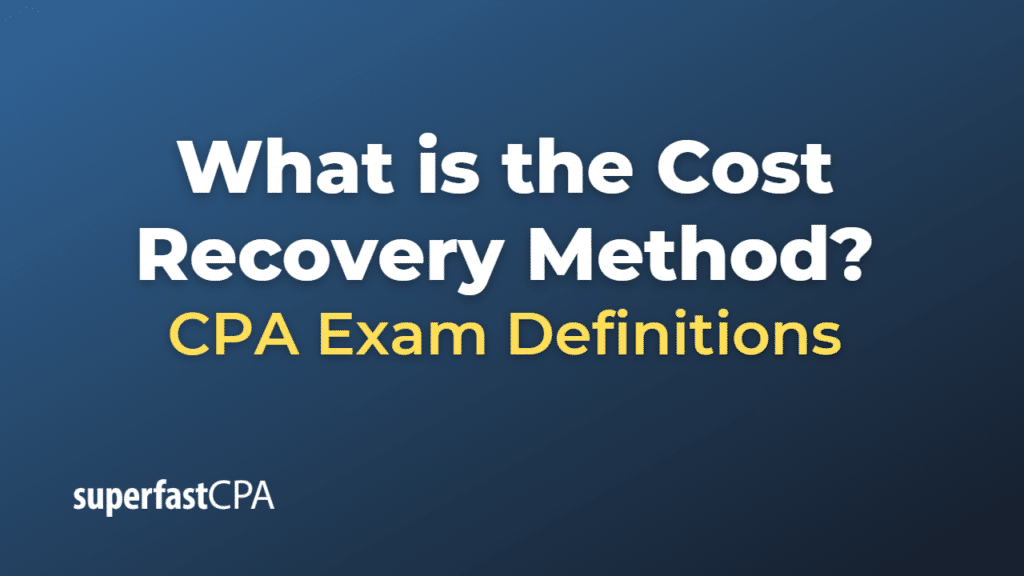Cost Recovery Method
The cost recovery method, also known as the cash recovery method, is a conservative accounting approach used for revenue recognition where revenue is only recognized when cash collections exceed the seller’s cost of the goods or services provided. In other words, all cash received from a sale is applied to the cost of the product or service until all costs are recovered, and only then is any additional cash received considered profit and recognized as revenue.
The cost recovery method is often used in scenarios where there is high uncertainty about the collectability of the sales price. By delaying the recognition of profit until all costs are recovered, the method protects the seller from overstating profits in case the buyer defaults on payment.
For example, if a company sells a product for $500 with a cost of $400, under the cost recovery method, the company wouldn’t recognize any profit from the sale until it has received at least $400 in cash from the buyer. Only once the company has received more than $400, would the excess be recognized as profit.
While the cost recovery method provides a conservative approach to revenue recognition, it does not conform to the generally accepted accounting principles (GAAP) or the international financial reporting standards (IFRS), which typically require revenue to be recognized when it is earned and realizable, regardless of when cash is received. Therefore, the use of the cost recovery method is usually limited to specific situations with high uncertainty around collectability.
Example of the Cost Recovery Method
Suppose a company sells a piece of equipment for $10,000. The cost to the company of this equipment was $7,000. The buyer agrees to make payments over 5 years. The company has concerns about the buyer’s creditworthiness, so it decides to use the cost recovery method for recognizing revenue from this sale.
In the first year, the company receives $2,000 from the buyer. Since this amount is less than the cost of the equipment ($7,000), the company recognizes all of this $2,000 as a recovery of its cost, and recognizes no profit from the sale.
In the second year, the company receives another $2,000. Again, it recognizes all of this as a recovery of its cost, since the total amount received so far ($4,000) is still less than the cost of the equipment.
In the third year, the company receives $3,000. Now, the total amount received ($7,000) equals the cost of the equipment. The company recognizes $2,000 of this payment as a recovery of its cost, and the remaining $1,000 as profit, since it has now recovered all of its costs.
In the fourth and fifth years, the company receives $1,500 each year. Since it has already recovered all of its costs, it recognizes all of this $3,000 ($1,500 * 2) as profit.
In total, over the 5 years, the company receives $10,000, recognizes $7,000 as a recovery of its costs, and $3,000 as profit, in line with the cost recovery method.
This method ensures that if the buyer defaults at any point, the company has not recognized more profit than it has actually received in cash. It’s a conservative approach that can be useful in certain situations, but it’s not in line with the standard revenue recognition principle, which states that revenue should be recognized when it is earned, not necessarily when cash is received.













